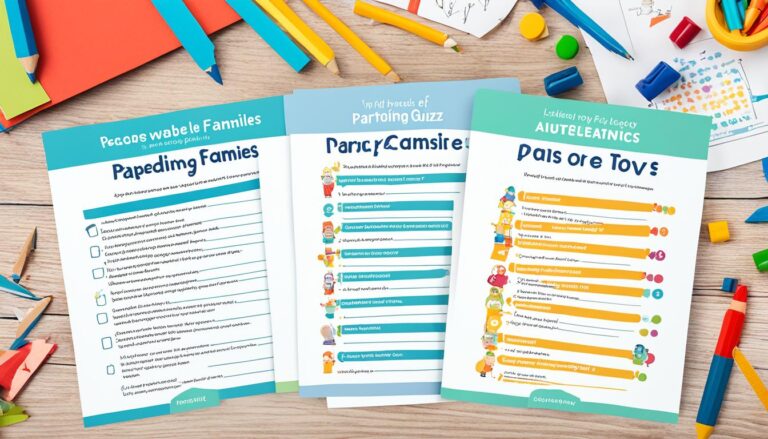Finding Balance: Work-Life Strategies That Actually Work
In today’s fast-paced and demanding work environment, achieving a healthy work-life balance is crucial for our productivity and well-being. As we navigate the challenges of balancing work and personal life responsibilities, it is essential to find effective strategies that can truly make a difference.
Work-life balance is not just about dividing our time between work and personal life; it is about finding harmony and fulfillment in both domains. By implementing the right strategies, we can enhance our productivity at work while nurturing our well-being and maintaining a sense of fulfillment in our personal lives.
Productivity is a key aspect of achieving work-life balance. When we effectively manage our time, set priorities, and avoid multitasking, we can accomplish more in less time. This allows us to create space for the activities and relationships that bring us joy and fulfillment outside of work.
At the same time, prioritizing our well-being is essential for maintaining work-life balance. Taking care of our physical and mental health, practicing self-care, and seeking support when needed are critical components of a balanced lifestyle. When we prioritize our well-being, we have more energy, focus, and resilience to handle the demands of both work and personal life.
By finding the right strategies and making intentional choices, we can create a work-life balance that allows us to thrive in all aspects of our lives. In the following sections, we will explore key strategies for achieving work-life balance, providing practical insights that can empower you to find the harmony you seek.
Key Takeaways:
- Work-life balance is essential for productivity and well-being.
- Effective time management is crucial for achieving work-life balance.
- Prioritizing well-being and self-care contributes to work-life balance.
- Strategies for work-life balance can empower individuals to thrive in all aspects of life.
- Implementing the right strategies is a continuous journey requiring intentional choices and adjustments.
The Importance of Work-Life Balance
Achieving a healthy work-life balance is crucial for both personal and professional success. Numerous studies have shown that employees with a better balance between their work and personal lives tend to be more productive, engaged, and satisfied with their jobs. It also has a positive impact on their overall well-being, leading to reduced stress levels and improved mental and physical health.
Striving for work-life balance allows individuals to allocate time and energy to various aspects of their lives, including family, relationships, hobbies, and self-care. By prioritizing these areas, individuals can create a harmonious equilibrium that enhances their overall quality of life.
“A healthy work-life balance is not only essential for one’s personal well-being but also crucial for professional success. It allows individuals to bring their best selves to both their personal and work lives, leading to greater productivity, satisfaction, and overall happiness.”
Employers also benefit from promoting work-life balance within their organizations. When employees feel supported in maintaining a healthy work-life balance, it leads to higher employee retention rates, increased job satisfaction, and enhanced organizational performance as a whole. By fostering a culture that values work-life balance, employers can create a positive and productive work environment.

Strategies for Achieving Work-Life Balance
To achieve work-life balance, it is essential to implement effective strategies that prioritize well-being and productivity. One key strategy is effective time management, which involves setting clear priorities, creating schedules, and avoiding multitasking. By allocating time effectively, I can focus on important tasks and avoid feeling overwhelmed.
Establishing boundaries between work and personal life is also crucial. It helps me maintain a healthy separation and prevents work from encroaching on personal time. For instance, I define specific work hours and avoid checking emails after work, allowing me to fully engage in non-work activities and nurture personal relationships.
Self-care plays a vital role in maintaining work-life balance. By prioritizing my physical and mental health, I can better manage stress and enhance my overall well-being. I engage in relaxation techniques such as meditation or deep breathing exercises to unwind after a long day. Additionally, I make time for hobbies and activities that bring me joy, whether it’s reading a book, going for a walk, or pursuing creative outlets.
Remember, taking care of oneself is not selfish; it’s essential for long-term success and happiness.
Lastly, embracing flexibility in work arrangements can contribute significantly to achieving a better work-life balance. Remote work options and flexible schedules allow me to adapt my work obligations around personal commitments, resulting in increased satisfaction and reduced stress levels.
Effective Work-Life Balance Strategies:
- Practice effective time management by setting clear priorities and creating schedules
- Establish boundaries between work and personal life, defining specific work hours and avoiding work-related activities outside those hours
- Prioritize self-care, including physical and mental health, relaxation techniques, and engaging in activities that bring joy
- Embrace flexibility in work arrangements, such as remote work options and flexible schedules

| Benefits of Work-Life Balance Strategies | Examples |
|---|---|
| Reduced stress levels | Improved mental and physical health |
| Increased productivity | Better time management and focus on priorities |
| Enhanced well-being | Greater overall satisfaction and happiness |
| Improved relationships | More quality time with family and friends |
Conclusion
In today’s fast-paced and demanding world, achieving a healthy work-life balance is crucial for our overall well-being and productivity. To successfully navigate the challenges of managing work and personal responsibilities, we need to implement practical strategies that prioritize our well-being.
One key strategy is effective time management. By setting clear priorities, creating schedules, and avoiding multitasking, we can optimize our productivity and ensure that we have dedicated time for both work and personal life.
Setting boundaries between work and personal life is also essential. Defining specific work hours, avoiding checking emails after work, and taking regular breaks can help us maintain a healthy separation between the two spheres, reducing stress and promoting relaxation.
Additionally, prioritizing self-care is crucial for achieving work-life balance. Taking care of our physical and mental health, engaging in activities that bring joy, and seeking support when needed are essential for our overall well-being. By investing time and energy in ourselves, we become more productive and fulfilled in both our personal and professional lives.
Employers also play a significant role in fostering work-life balance. Creating supportive work environments, implementing policies that prioritize employee well-being, and offering flexible work arrangements can contribute to a healthier work-life balance for their team members.
Ultimately, finding work-life balance is an ongoing journey. It requires continuous effort, adjustment, and commitment to prioritize our well-being and maintain a healthy equilibrium between work and personal life. By implementing these strategies and prioritizing our own needs, we can build a fulfilling and productive life that encompasses both work and personal pursuits.
FAQ
What is work-life balance?
Work-life balance refers to the equilibrium between an individual’s work and personal life. It involves effectively managing and allocating time and energy to various responsibilities, including work, family, relationships, hobbies, and self-care.
Why is work-life balance important?
Work-life balance is crucial as it has a direct impact on productivity, well-being, and overall satisfaction. Individuals who achieve a better balance between their work and personal lives tend to be more engaged, less stressed, and enjoy improved mental and physical health.
What are some strategies for achieving work-life balance?
There are several strategies that can help individuals achieve work-life balance. These include effective time management, setting boundaries between work and personal life, prioritizing self-care, and seeking flexibility in work arrangements.
How can time management contribute to work-life balance?
Effective time management involves setting clear priorities, creating schedules, and avoiding multitasking. By managing time efficiently, individuals can allocate the necessary time and effort to both their work and personal life responsibilities.
Why is it important to set boundaries between work and personal life?
Setting boundaries is crucial to maintain a healthy work-life balance. By defining specific work hours and avoiding tasks related to work outside of those hours, individuals can create dedicated time for their personal life activities and relationships.
How does self-care contribute to work-life balance?
Prioritizing self-care is essential for achieving work-life balance. By taking care of physical and mental health, practicing relaxation techniques, engaging in enjoyable hobbies, and seeking support when needed, individuals can enhance their overall well-being and effectively manage their work and personal life responsibilities.
How can flexibility in work arrangements help achieve work-life balance?
Flexibility in work arrangements, such as remote work options and flexible schedules, allows individuals to have more control over their time and location of work. This flexibility enables them to better manage their work and personal life responsibilities, leading to improved work-life balance.






